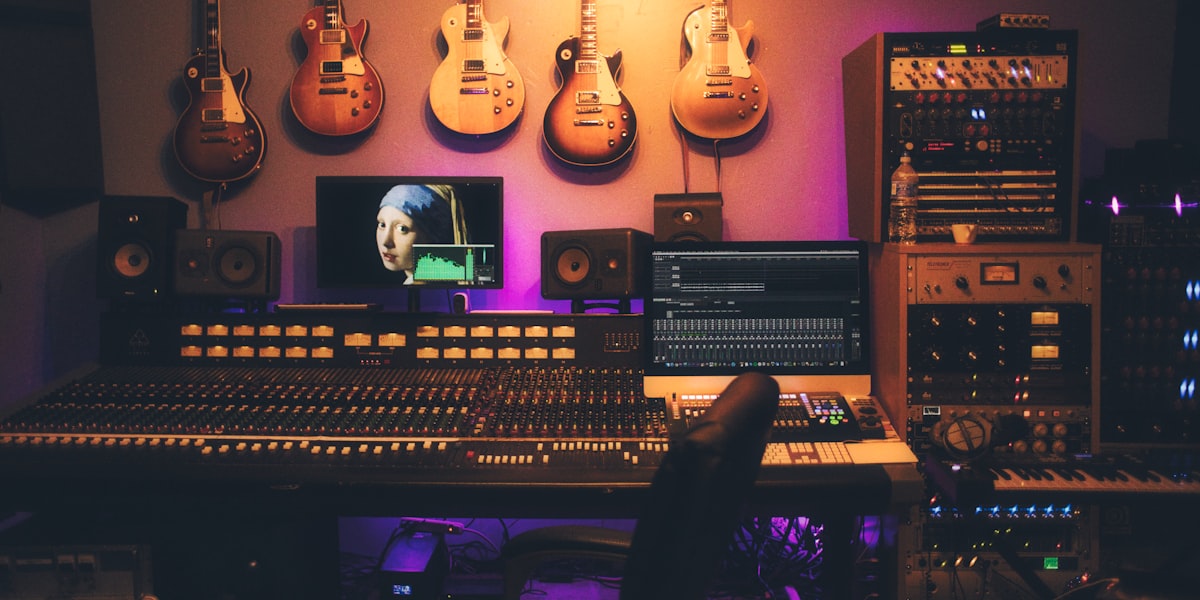Architecture Showdown: MusicGen vs Stable Audio vs MusicLM
A deep technical dive into the architectural choices of leading music generation models, comparing autoregressive transformers, latent diffusion, and hierarchical approaches.

The Architectural Paradigm Split
The contemporary landscape of AI music generation is dominated by two principal architectural paradigms: autoregressive models, which generate sequences step-by-step, and diffusion models, which refine a complete signal from noise.
- +Well-suited for discrete tokens
- +Excel at prompted continuation
- -Errors can compound over time
- +Superior diversity and consistency
- +Natural framework for controls
- -Computationally intensive
Meta's MusicGen: Single-Stage Efficiency
Core Architecture
MusicGen is a single-stage, autoregressive Transformer-based decoder. Unlike hierarchical models that generate music in successive stages, MusicGen generates all aspects in a single pass.
Key Innovations
1. Audio Tokenization with EnCodec
MusicGen processes discrete "tokens" generated by Meta's EnCodec, a high-fidelity neural audio codec. EnCodec uses Residual Vector Quantization (RVQ), representing audio as parallel streams from different codebooks.
1Audio → EnCodec → Multiple Codebook Streams → Interleaved Tokens2. Efficient Token Interleaving
The key innovation enabling single-stage design is the efficient token interleaving pattern. By introducing calculated delays between codebook predictions, the model can effectively predict them in parallel.
This reduces the number of autoregressive steps to generate one second of audio to just 50 steps, making generation highly efficient.
3. Flexible Conditioning
MusicGen supports two primary conditioning modes:
- •Text-to-music: Uses frozen T5 text encoder for semantic guidance
- •Melody-guided: Extracts chromagram from reference audio to follow melody
Model Variants: musicgen-small (300M params), musicgen-medium (1.5B params), musicgen-large (3.3B params)
Stable Audio: Latent Diffusion Excellence
Core Architecture
Stable Audio is a latent diffusion model. The diffusion process doesn't occur on raw audio but on a compressed latent representation, making it computationally feasible.
Architectural Components
1. Variational Autoencoder (VAE)
A fully-convolutional VAE compresses high-fidelity stereo audio (44.1kHz) into compact latent vectors and reconstructs them with minimal loss.
144.1kHz Stereo → VAE Encoder → Latent Space → VAE Decoder → Audio2. Diffusion Transformer (DiT)
The generative core is a Transformer-based diffusion model operating in latent space. This is notable as many diffusion models use U-Net architectures.
The DiT architecture is more conducive to model scaling and efficiently captures spatio-temporal relationships in latent data.
3. Multi-Modal Conditioning
The DiT is conditioned on three signals simultaneously:
- •Text Embeddings: From pre-trained T5 encoder
- •Timing Embeddings: Enable variable-length generation
- •Diffusion Timestep: Current position in denoising process
✅ Key Advantage
Trained exclusively on Creative Commons licensed audio, making it legally safer for commercial applications.
Google's MusicLM: Hierarchical Mastery
Core Architecture
MusicLM is a hierarchical sequence-to-sequence model that generates music in stages, moving from high-level semantic concepts to fine-grained acoustic details.
Multi-Level Token Architecture
Three Token Types
Semantic Tokens
Long-term coherence
25 tokens/sec
Audio-Text Tokens
Joint embeddings
MuLan model
Acoustic Tokens
Fine-grained details
600 tokens/sec
Staged Generation Process
Semantic
Acoustic
Waveform
⚠️ Trade-off: While hierarchical approach allows rich semantic modeling, it's more complex and susceptible to error propagation between stages.
Comparative Analysis
| Model | Type | Representation | Key Feature |
|---|---|---|---|
| MusicGen | Autoregressive | Discrete Tokens | High efficiency |
| Stable Audio | Latent Diffusion | Compressed Latent | Variable-length stereo |
| MusicLM | Hierarchical | Multi-level Tokens | Rich semantic modeling |
Key Insights
Audio representation choice is the foundational decision dictating the entire generative process. MusicGen's discrete tokens leverage autoregressive language models, while Stable Audio's latent space makes diffusion tractable.
Architectural simplification trend: The open-source community favors simpler, single-stage designs (MusicGen, Stable Audio) over complex cascaded architectures (MusicLM) for better accessibility and extensibility.
Closed vs Open divergence: Closed-source models pursue absolute performance at any complexity, while open-source favors tractable, extensible architectures that democratize access.
Suno: The Closed-Source Enigma
Inferred Architecture
While Suno remains proprietary, its capabilities suggest a sophisticated hybrid architecture:
Transformer Component
High-level planning, lyrics generation, structure, melody, and harmony composition
Diffusion Component
High-fidelity audio synthesis, especially for complex vocal waveforms
Legal Controversy: Major lawsuits allege training on copyrighted music without permission, highlighting the ethical divide in the AI music space.
Performance Benchmarks
Generation Speed Comparison
Audio Quality
Stable Audio
44.1kHz Stereo
Efficiency
MusicGen
Single-stage design
Semantic Control
MusicLM
Multi-level tokens
Choosing the Right Architecture
Choose MusicGen When:
- •You need fast, efficient generation
- •Working with limited computational resources
- •Melody-following is important
Choose Stable Audio When:
- •High-fidelity stereo output is crucial
- •Need variable-length generation
- •Legal safety with CC-licensed training data
Choose MusicLM When:
- •Rich semantic understanding is priority
- •Complex musical structure required
- •Can handle multi-stage processing
References & Resources
[1] Copet, J., et al. (2023).Simple and Controllable Music Generation (MusicGen)
[2] Evans, Z., et al. (2024).Stable Audio Open
[3] Agostinelli, A., et al. (2023).MusicLM: Generating Music From Text
[4] Hugging Face Models:MusicGen |Stable Audio